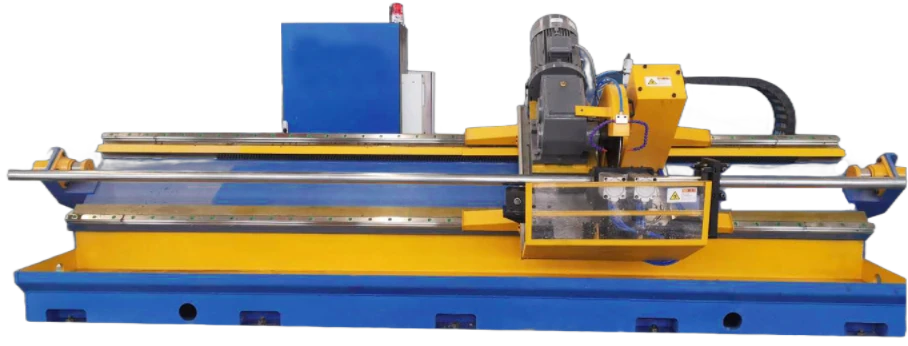Roof Panel Roll Forming Machine for Efficient Metal Sheet Production
The Roof Sheet Roll Forming Machine An Overview
In the realm of construction and manufacturing, the efficiency and quality of building materials are of paramount importance, especially when it comes to roofing. One essential piece of equipment that has revolutionized the production of roof sheets is the roof sheet roll forming machine. This innovative machine enables the creation of durable and aesthetically pleasing roofing materials with ease and precision, catering to a variety of building requirements and styles.
What is a Roof Sheet Roll Forming Machine?
A roof sheet roll forming machine is a specialized piece of machinery designed to create metal roofing sheets from coiled metal stock. The process begins with feeding a metal coil, typically made of galvanized steel, aluminum, or other materials, through a series of rollers that progressively shape and form the metal into a specific profile. These profiles can vary widely, including corrugated, trapezoidal, and standing seam designs, each suitable for different roofing applications.
The Production Process
The operation of a roof sheet roll forming machine involves several critical steps
1. Uncoiling The metal coil is loaded onto an uncoiler, which unwinds the coil as it is fed into the machine. 2. Guiding and Flattening The sheet passes through guiding rollers that ensure proper alignment before it reaches the forming section of the machine. Some machines may also include a flattening process to remove any imperfections in the coil.
3. Roll Forming As the metal sheet progresses through the series of rollers, it undergoes continuous bending and shaping. Each roller is designed to impart a specific contour to the metal, gradually forming it into the desired profile.
4. Cutting Once the sheet has been formed to the correct length, the machine incorporates a cutting mechanism. Some machines utilize a hydraulic shear, while others may use a knife cutting system. The cutting process is typically triggered by an automatic length measuring system, ensuring precision in the final product.
5. Output Finally, the finished roof sheets are ejected from the machine, ready for installation or further processing. The entire process is automated, allowing for high production speeds and consistent quality.
Benefits of Using a Roof Sheet Roll Forming Machine
roof sheet roll forming machine

The advantages of utilizing a roof sheet roll forming machine are numerous
- Efficiency These machines are capable of producing large quantities of roofing sheets in a short time frame, drastically reducing labor costs and production time.
- Quality Control Automated systems ensure high precision and uniformity in the produced sheets, minimizing defects and wastage.
- Flexibility Many modern roll forming machines can be easily adjusted to produce different profiles and sizes, allowing manufacturers to meet the diverse needs of their clients.
- Material Conservation The process optimizes material usage, as it allows for continuous production without the need for additional cutting or shaping.
- Cost-Effectiveness By streamlining production and reducing material waste, these machines ultimately lower the overall cost of roofing materials.
Applications
Roof sheet roll forming machines are widely used in various sectors, including commercial, industrial, and residential construction. From warehouses and factories to homes and agricultural buildings, the versatility and robustness of roll-formed roofing sheets make them a popular choice for many applications. Additionally, they are often employed in the production of side cladding and other architectural elements, enhancing the overall aesthetic and functional aspects of buildings.
Conclusion
The roof sheet roll forming machine is an indispensable tool in modern construction and manufacturing. With its ability to produce high-quality roofing materials efficiently and economically, it has become a favored choice for builders and manufacturers alike. As technology continues to evolve, we can expect even more advancements in roll forming machinery, further enhancing the capabilities and efficiency of roofing material production, ultimately contributing to the structural integrity and design of buildings around the world.
-
High Frequency Straight Seam Welded Pipe Production Line-BzZhou Xinghua Machinery Equipment Manufacturing Co., LTD.|Precision Welding, High EfficiencyNewsJul.30,2025
-
High Frequency Straight Seam Welded Pipe Production Line|BzZhou Xinghua|Precision Welding&EfficiencyNewsJul.30,2025
-
High Frequency Straight Seam Welded Pipe Production Line - BzZhou Xinghua|Precision Engineering&EfficiencyNewsJul.30,2025
-
High-Frequency Straight Seam Welded Pipe Production Line-BzZhou Xinghua Machinery Equipment Manufacturing Co., LTD.NewsJul.30,2025
-
High-Frequency Straight Seam Welded Pipe Production Line-BzZhou Xinghua Machinery Equipment Manufacturing Co., LTD.|Precision Manufacturing, High EfficiencyNewsJul.30,2025
-
High Frequency Straight Seam Welded Pipe Production Line-BzZhou Xinghua Machinery Equipment Manufacturing Co., LTD.|Precision Steel Pipe Manufacturing&Industrial EfficiencyNewsJul.29,2025


